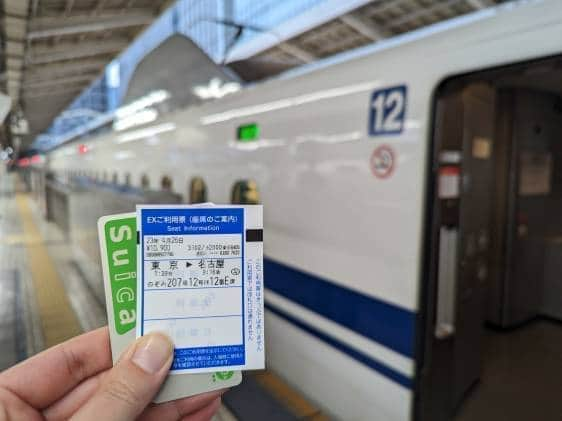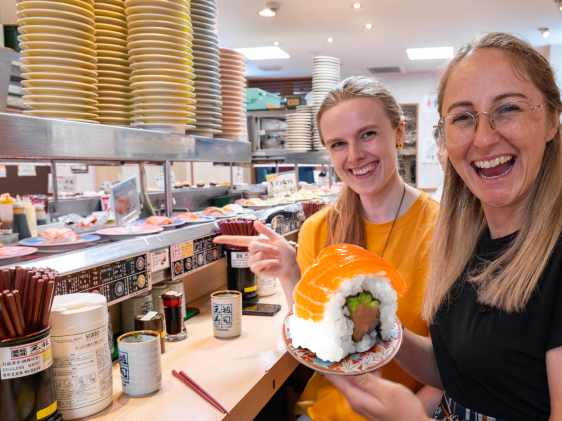Do you yearn for a home in the Japanese countryside, far from the hustle and bustle of big-city life? An akiya (abandoned house) may be the opportunity you’ve been waiting for.
What is an akiya?
Quite simply, akiya (空き家) means “empty house”. What it usually means is a vacant home in a small town that nobody wants to live in. Some may even be stigmatized properties. Akiya are a symptom of Japan’s declining population and the overwhelming preference for newly built houses in urban areas.
According to the Ministry of Internal Affairs and Communications, as of October 2023, there were over 9 million empty houses, double the number from 30 years ago. And with Japan’s population predicted to drop from 125 million to 87 million by 2070, this number will keep growing.
Akiya can technically be any vacant property, but are often large, traditional houses. For example, most houses on the akiya bank for Usuki City in Kyūshū are enormous compared to modern Japanese homes. Have you always wanted a garden, or need a four-bedroom house? No problem. You can expect several rooms, ranging from 4 to 10 tatami mats in size each. It’s also worth noting that, in the countryside, tatami mats can be bigger than the ones you find in the city, giving plenty of extra floor space.
Still, these houses need work. Most akiya kitchens can be described as rudimentary. For toilets, you might need to squat! That’s right; a lot of older homes have old-school squat toilets, which means you’ll be trading in a fancy porcelain throne for a less fancy hole on the floor.

But more and more people are looking away from the city centers and into akiya homes in the countryside.
What to be aware of with akiya
Akiya are often old, unwanted, and left empty for a long time. Making your akiya livable may require a sizable cost to bring the house up to code. Depending on the age and construction method, repairs could easily run into the millions of yen (tens of thousands of dollars). If you want modern luxuries like insulation, soundproofing, and new wiring, you can add another zero to that cost.
But there’s a silver lining. There may be subsidies available from the local municipal government for renovating akiya, so make sure you ask the akiya bank (see below) about this.

Is an akiya a good investment?
Forget about buying an akiya as an investment. Unless there is something special about your akiya (for example, it’s a traditional farmhouse with lots of historical character, or close to a popular tourist site) and you spend a lot on renovation, you will also have trouble finding a buyer. Think of an akiya more as a personal investment in your happiness, as opposed to a financial one.
Will an akiya help me get a visa?
Owning property in Japan doesn’t come with a visa. It’s true that anyone can buy a house in Japan, but you still need a visa to live here.
Can I buy an akiya as a vacation home?
Finally, akiya are not meant to be vacation homes for temporary visitors to Japan. A big reason why they’re so cheap and why towns offer subsidies to lure people to move into them is to rebuild the dying town. The towns rely on people to come with their businesses and families to repopulate and maintain the communities. For example, you may be part of a small community that meets monthly to clean the local shrine, organize waste disposal, etc.
Are akiya “free” houses?
No, but they can be very cheap. Some sell as low as ¥50,000. This is the exception rather than the rule, though. Large houses on a substantial lot of land are often ¥2,000,000 or more, with the potential to negotiate a lower price. Let’s face it: if the place has been empty for a few years with no buyer interest, the seller probably has unrealistic price expectations due to sentimentality or the sunk cost fallacy.
It’s also worth noting that not all akiya are for sale. Some are for rent. These rents can also be extremely low — sometimes under ¥10,000/month. All the same drawbacks of buying an akiya apply: if you want to make a ¥10,000/month house livable, you must spend the cash on fixes.
Some municipalities have started getting creative in dealing with akiya, offering generous subsidies to help cover some of these extra costs. A small number of municipalities in rural areas do offer free houses. Both scenarios come with strict conditions.
One condition could be agreeing to live in the town for a certain number of years, and you may be expected to be an active community member. The preference for those is young families or people with businesses. There may also be strict rules for what you can do with the house, meaning you can renovate but must leave the original house intact. If the akiya is zoned with farmland, you may have to farm. Like rice and stuff.
The other thing to be aware of with free or very cheap houses in Japan is the taxes you must pay in addition to the purchase price.

Taxes and acquisition costs for akiya
When buying any existing house and land in Japan, five different taxes must be paid. From most expensive to least expensive, they are:
- Registration tax (登録免許税) – 2% of estimated value
- Property acquisition tax (不動産取得税) – 4% of purchase price
- Fixed asset tax (固定資産税) – 1.4% of purchase price
- City planning tax (都市計画税) – 0.3% of purchase price
- Stamp duty (印紙税) – ¥0 to ¥20,000 yen, depending on purchase price
The big variable is the first tax, because it’s based on the government’s estimated value rather than the purchase price, which is likely to be higher than the purchase price.
Sample cost breakdown for taxes and fees
If you were to purchase an akiya for ¥2,000,000 but with a government-estimated book value of ¥4,000,000, the additional tax costs would be:
- Registration tax — ¥80,000
- Property acquisition tax — ¥80,000
- Fixed asset tax — ¥28,000
- City planning tax — ¥6,000
- Stamp duty — ¥0 (stamp duty is zero up to ¥5,000,000)
Total — ¥174,000
Additionally, you should budget approximately ¥100,000 for lawyers’ fees. The buyer usually bears the cost of the “judicial scrivener” (司法書士), who will draw up the contract and carry out the changes in registration.
You don’t need a real-estate agent to look for properties via akiya banks. Still, a real-estate agent is highly advised unless you live in Japan and are fluent in Japanese. If you have difficulty finding an agent who is fluent in English, it may be helpful to go through an intermediary who can facilitate the sale and even act as a representative on your behalf.
Japanese real-estate agents can collect a commission from both the seller and the buyer. This is limited by law to 3% of the sale price + ¥60,000 + consumption tax (10%). On our hypothetical ¥2,000,000 house, this would be a maximum of ¥132,000.
To sum up, you can expect to pay another ¥400,000 or so in taxes and fees on your ¥2,000,000 purchase.

Financing an akiya
In a country where cash is king, buying real estate is no exception. If you can pay cash, you’ll have the least trouble. Remember, anyone can purchase property in Japan whether they’re a resident or not. If you depend on securing a mortgage loan, you may be in for some heartache.
For a home loan, you must be a local resident with Japanese income, a Japanese bank account, and Japanese life insurance. Banks are reluctant to lend for an akiya even with those prerequisites, so you may be best off not mentioning that part when you apply.
Unfortunately, even if you meet the above criteria, the major banks will probably still decline your application unless the house is considered valuable or new enough. For example, if the house is worth less than ¥10,000,000, or is over 30 years old, major banks won’t touch it (unless the land is in a prime spot like Tokyo). You may have better luck with a smaller regional bank in these instances.
According to Matt Ketchum, founder of Akiyaz, a platform for discovering vacant properties, “Buyers usually pay directly to the seller’s bank account a few days before the payment date.” While establishing an escrow account is an option, it is not common in Japan.
If you need to get money into Japan, you can transfer large amounts of money (enough to buy an akiya) with services like OFX, which allows non-residents of Japan to send money to Japan easily.
Another thing to consider if you’re based outside of Japan is having someone take care of the day-to-day maintenance and admin that goes with owning a house. As Ketchum mentions, “Property management services need to be arranged for when buyers are not in Japan, and various companies offer these services to foreign investors.”
You can also take advantage of digital mail-forwarding services to ensure you get your mail and can set up credit card auto-billing for your monthly bills. Once a year, you’ll need to come to Japan to pay your property tax or have a friend, family member, or property management company pay it for you by proxy.
Akiya banks and other places to find an akiya
There’s no single website or database that compiles available akiya in Japan. Doing a Google search for “田舎 中古一戸建て <+ insert your region>” can be a good start and usually brings up a lot of links. Although plenty of websites like this one collect listings from throughout Japan, they tend to present average-priced houses.
For the real bargains, you need to check the sites set up by the municipalities — and there are hundreds. Local governments throughout the country have created akiya banks — offices specialized in looking for new owners for akiya. Their aim is to find buyers and revitalize the town. The word “bank” is a little misleading and reflects Japanese usage of the English loan word. It’s more akin to a blood bank than a financial bank.
Not surprisingly, there is no accommodation for English speakers with these sites. However, anecdotally, most are receptive to approaches from foreigners. Not unusual for Japan, plenty of akiya banks don’t actually have websites, or the website is just a place to put their address and phone number. If you are interested in the area, you can call or email and request information.
For more information on akiya banks, including advice on how to deal with them, see our guide to akiya banks.

Buying an akiya
There are a few steps to buying an akiya. Here’s a brief list, so you know roughly what to expect:
- 1. Have your documents ready. If you’re not a resident of Japan, you need proof of identity (like a passport) and an affidavit validating it. Japanese residents need their proof of ID, residence card, personal seal (hanko), and certificate of seal impression. If you’re applying for a loan, banks may require all of the above and more.
- 2. Look for a house. If you’re a foreigner, it helps to find a real-estate broker who is familiar with working with foreigners. Some brokers will require you to visit the homes in person; some will offer virtual services. You’ll need to be aware of any stipulations that come with the home, such as renovation requirements, zoning requirements (if you need to use the land for farming, for example), etc.
- 3. Hire an independent inspector if that’s something that’s important to you. The cost for this will run between ¥50,000 – ¥100,000.
- 4. Buy your house! This involves paying for the house, as well as any fees and taxes, via a loan, cash, with the help of a lawyer, or a cash-transfer option. This usually needs to be done in person in Japan, but you may be able to hire a lawyer to handle this for you.
- 5. Enjoy your home. Don’t forget to pay your annual property tax, insurance, and utility bills. If you’re away for extended periods and need someone to take care of things around the house (and you will!), you will need to hire a property manager. Your English-speaking realtor or intermediary can assist you with finding someone.
Buying an akiya may not be as easy or cheap as some articles suggest, but it is certainly doable and a great option for the right person.
Why buy an akiya?
So, after all this, you’re probably wondering why anyone in their right mind would buy an akiya.
Ketchum shared why many have done it. Akiya are unique, cheaper than new homes, and very much aligned with achievable sustainability goals. They also “represent a viable path towards new business in places where that hasn’t been the case previously.”
In other words, it’s a case of pride. “If done correctly, buying an akiya and putting it to good use marks the owner as someone with unique tastes, business acumen, a willingness to think outside of the box, and the ability to demonstrably affect their communities positively.”
So if that sounds like you, an akiya may just be the answer to building a life in Japan.
While we do our best to ensure it’s correct, information is subject to change. This post was originally published in October, 2020. Last updated in September, 2024 by Misty Fujii.































